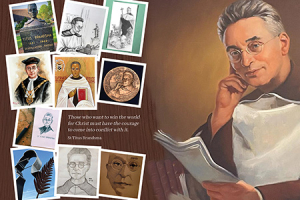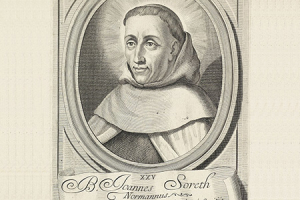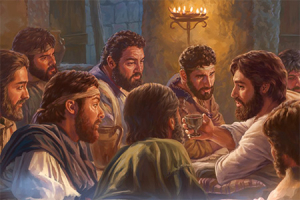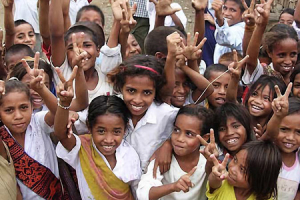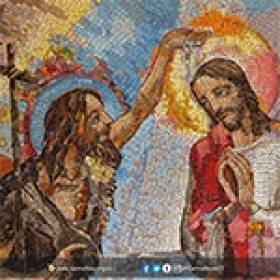New St Titus Brandsma Desktop Wallpaper
To commemorate the first anniversary of the Canonisation of St Titus Brandsma, we have created a new St Titus Brandsma Desktop Wallpaper that can be downloaded for free in 1920x1080 at:
https://carmelites.org.au/desktop-wallpaper
Let him go free
The final of the three Great Gospels of Lent is ours today - a Gospel story of life and freedom. Like the gospels of the last two Sundays, the dramatic story of Jesus raising his friend Lazarus from the dead is a story of love, faith and belief.
There are three different groups of believers in the story: those who believe that Jesus could have prevented Lazarus’ death (Jesus is already known to be a healer); those who came to believe in him because they see Lazarus rise, and those, like Martha, who believe in Jesus even though Lazarus died.
In this Gospel Jesus proclaims himself ‘the resurrection and the life’. We see him deeply moved by the death of his friend. We find him in earnest prayer with God. We see him full of strength as he commands Lazarus to come out of the tomb.
pdf
Celebrating At Home 5th Sunday in Lent [PDF]
default
Celebrating At Home 5th Sunday in Lent [ePub]
Journey into the light
In this Sunday’s Gospel we accompany the man who was born blind on his journey into the light. The first thing we read in the full version of this Gospel is that Jesus announces that the man is sinless – he has been born blind so that God’s glory can be seen at work in him. Then Jesus gives the blind man sight. Notice that the man didn’t ask to be healed – this is Jesus’ initiative, taking the first step and reaching out in love. That’s how Jesus approaches us, too.
pdf
Celebrating At Home 4th Sunday in Lent [PDF]
default
Celebrating At Home 4th Sunday in Lent [ePub]
Registration Open for Brandsma Conference
A conference on Titus Brandsma will take place at Radboud University in Nijmegen, Netherlands on October 3-6, 2023. The program brings together scholars from various parts of the world who will present on the multi-faceted life and work of Brandsma. The number of participants is limited to 30, providing an opportunity for all to become involved in the discussions.
Come and drink
The Gospels of the next three Sunday make clear that the Way from temptation to transfiguration is in and through Jesus Christ who is Living Water, Light and Life for the would-be disciple. They are three great stories from John about responding in faith...
pdf
Celebrating At Home 3rd Sunday in Lent [PDF]
default
Celebrating At Home 3rd Sunday in Lent [ePub]
New Ministries for Young Carmelites
During Mass on Sunday 4 December at St Elias Community in Hera, Timor-Leste, 6 young Carmelites received the ministry of Lector (Brs Calisto, Pedro, Zebedeu, Aleixo, Donanciano & Gaudencio) and 4 received the ministry of Acolyte (Brs Samuel, Joao Caunan, Jonias and Lucas).
Fr Bruce Clark was the principal celebrant and the homily was given by Fr Carlito da Costa Araujo. Fr Roque S. Da Cruz also concelebrated and Br Narcizio Vilanova Da Costa was the deacon.
Timor-Leste celebrates Fr Bruce
On Sunday 4 November the Carmelite Family gathered at St Elias Community in Hera for a Mass of Thanksgiving for Fr Bruce Clark. Fr Bruce is returning to Australia to take up his role as newly elected Prior Provincial after living in Timor-Leste for the last 10 years. During that time, he has served as Novice Master, Prior, Director of Formation and the Provincial’s representative in Timor-Leste. A large crowd of Friars, sisters and members of the Carmelite Family gathered to mark the occasion and express their gratitude for Fr Bruce’s presence and ministry in Timor-Leste.
"Thank You Fr. Bruce Clark, may the Lord Bless you always in your task as a Prior Provincial. We Pray always for you!" - Carmelite Community in Timor-Leste
COP 27, stagnation & progress
Every three years the Carmelites are called to a Chapter where all positions are relinquished and new or renewed appointments are made. And so it is that the Australia & Timor Leste Province has concluded its Chapter and our Justice Peace and Integrity of Creation (JPIC) Commission becomes open to a new team.
After 13 years on this team I will no longer be serving in this ministry acknowledging that it is time for a change, but grateful that the passion is still burning for God’s work in helping to make the world a better place. It has been enlivening and a privilege to bring before you the need for all of us to live out our faith in justice and in peace, as demonstrated with the vision and inspiring words of Pope Francis’, captured so beautifully in ‘Let us Dream’.
Prior General's Letter for World Youth Day
Dear Carmelites and Friends of Carmel,
With less than a year to go to the World Youth Day, excitement is increasing, and we are beginning to feel that we have to get moving to get organised. There is a great expectation that there will be an enormous attendance at this next World Youth Day.
When we hear the name Portugal we often think of Fatima and of the many beautiful events Carmelites have had there over the years. This time Portugal means Lisbon, a beautiful city in which there have been Carmelite communities since 1387. The Carmelites in Portugal are getting ready to welcome the participants at the Carmelite Day that will take place on the 2nd August 2023, the day before the main event.
St Teresa of Jesus
On 15 October we commemorate the feast day of one of the most remarkable women to have ever walked the earth, a Spanish contemplative nun who lived and died well over four centuries ago but whose words and deeds continue to impact us, especially those who have chosen to heed the silent call of Carmel.
Memorial of Blessed John Soreth
Today the Carmelite family celebrates the memorial of Blessed John Soreth (c.1395 – 1471), Prior General and reformer of the Carmelite Order. During his time as Prior General he was also responsible for the creation of Carmelite communities for women and the admission of lay associates as part of the Order.
Remembering & making present
This Gospel begs us ask ourselves if we are truly people who remember Jesus and allow his Spirit to shape our words, thoughts and actions so that he may remain present to us and to those around us.
pdf
Celebrating At Home Sixth Sunday of Easter [PDF]
default
Celebrating At Home Sixth Sunday of Easter [ePub]
Carmelites active in Child Safety
In the Annual Report by the Church to the National Office for Child Safety, the Carmelites of Australia and Timor-Leste drew particular attention to its work with 2 East Timorese child protection experts to review progress in implementing the Province's Safeguarding Policy. This also included a risk assessment of the ministries in Timor-Leste. The report of the 2 experts highlighted that Carmelites in Timor-Leste have a good understanding of the policy and positive attitudes towards implementing it. In addition to making helpful recommendations, the East Timorese experts produced a training manual and ran three training sessions with seminarians, staff, volunteers, teachers and key community leaders, specifically focusing on the code of conduct.
Novena to Our Lady of Mount Carmel
On the 9 days before the Feast of Our Lady of Mount Carmel (16 July), we pray for the needs of our Carmelite Family in Australia and Timor-Leste. Last year, in the midst of COVID-19, we included the people of the world in our novena of prayer. The novena can be prayed at any time of the year for the intentions below or for your own intentions asking Our Lady of Mount Carmel to intercede and pray with us. The prayers and intentions can be downloaded pdf here.
What makes a Carmelite a Carmelite?
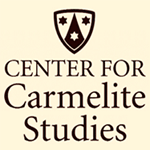 Join Prof Keith Egan, TOCarm, as he explores the Carmelite charism's dynamic and evolutionary character, as shown in the unfolding of Carmelite identity when the hermits on Mount Carmel migrated to Europe and gradually embraced the mendicant movement. Keith Egan has written and lectured extensively in Carmelite Spirituality and theology over many years. Watch now.
Join Prof Keith Egan, TOCarm, as he explores the Carmelite charism's dynamic and evolutionary character, as shown in the unfolding of Carmelite identity when the hermits on Mount Carmel migrated to Europe and gradually embraced the mendicant movement. Keith Egan has written and lectured extensively in Carmelite Spirituality and theology over many years. Watch now.
Second Sunday in Advent (A) 2019
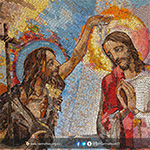 John the Baptist sits at the centre of this week’s Gospel and next week’s. He is the ‘one who cries in the wilderness: Prepare a way for the Lord; make his paths straight’.
John the Baptist sits at the centre of this week’s Gospel and next week’s. He is the ‘one who cries in the wilderness: Prepare a way for the Lord; make his paths straight’.
John was preparing the people for the coming of Jesus. Moved by his preaching many sought baptism in the river Jordan. This ancient water-rite symbolised dying to the old way of life and rising to a new way of life. That’s what repentance is about: turning away from sin and turning towards God. It is about true conversion of heart. It’s about making straight the pathways of our hearts. The fruit of our repentance and true conversion shows itself in good works.
2018 World Human Rights Day
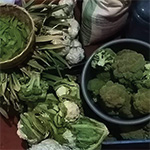 Seventy years ago, in the wake of the barbarities committed against whole races and nations, the United Nations agreed on The Charter of Human Rights. Throughout the succeeding years, some of these fundamental rights have been ignored and trampled upon when political expediency has been the motivating force.
Seventy years ago, in the wake of the barbarities committed against whole races and nations, the United Nations agreed on The Charter of Human Rights. Throughout the succeeding years, some of these fundamental rights have been ignored and trampled upon when political expediency has been the motivating force.
Article 21, part 1 states:
Everyone has the right to a standard of living adequate for the health and well-being of himself and of his family, including clothing, housing, medical care, and necessary social services, and the right to security in the event of unemployment, sickness, disability, widowhood, old age, or other lack of livelihood in circumstances beyong his control.
Let us pray for those who lack the elements necessary to live a basic human life.
New Carmelite Saint
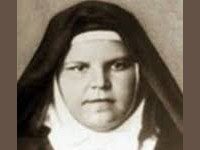 Among the four women religious canonised by Pope Francis on 17 May was Discalced Carmelite nun, Sr Mary of Jesus Crucified. She is the first Carmelite nun from the Middle East.
Among the four women religious canonised by Pope Francis on 17 May was Discalced Carmelite nun, Sr Mary of Jesus Crucified. She is the first Carmelite nun from the Middle East.
Born in Galilee, Mary lived in Egypt, Lebanon, France and India and her short life came to an end in Bethlehem. She is a bridge between the Christians of the East and West.
Miriam Baouardy was born in Galilee on 5 January 1846 to Greek parents of the Melkite Rite.
St Teresa's Walking Staff
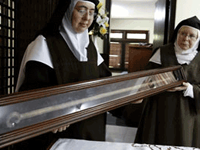 The original walking cane used by St Teresa of Avila during her journeys across 16th Century Spain arrived at the Discalced Carmelite Friars' priory in Varroville, NSW as part of a global "Way of Light" pilgrimage to mark the 500th anniversary of her birth.
The original walking cane used by St Teresa of Avila during her journeys across 16th Century Spain arrived at the Discalced Carmelite Friars' priory in Varroville, NSW as part of a global "Way of Light" pilgrimage to mark the 500th anniversary of her birth.
So far the walking stick has been to Latin America, the USA, Indonesia and Taiwan. It will return to Avila in time for Teresa’s 500th birthday, 28 March 2015. By the time the journey is over, the staff will have visited 5 continents, 30 countries and travelled 117,000 miles in 164 days.
Carmelite Librarians Meet
Prague Reading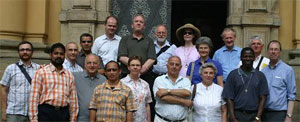
Philip Harvey, Librarian at the Carmelite Library, Middle Park
Positioned in 24K window seat to Prague via Dubai, any time of day, which turns anytime soon to night, can be spent touching the in-flight screen. A poke of the dropdown box gives eight pages of Essential Albums. A deft jab with the index finger will display enough movies to watch for several circumnavigations of the planet. A nudge with a knuckle gets the screen keeping constant updates on the flight, including camera shots of terra firma below and nimbus or cirrus or astra ahead. But interestingly, in all of this magical mystery tour of 2012 culture, not one text screen. Not one file of great Czech poems to inform the traveller of the Bohemian soul. Not one short essay by Vaclav Havel. Touching is changing how we access our listening, watching, and reading. It is changing how we access. The flight screen is an in-your-face reminder of the contemporary declaration that the fold is dead. Books fold, magazines crinkle, we dog-ear the page before taking a catnap. But the flat screen is altering the habits of a lifetime, if not precisely replacing them. A child of five knows which spot on the screen to touch next, quicker than I know how to find the table of contents in my compendious monographic companion. Travelling at a ground speed of 581 miles per hour toward Prague I choose instead to sit back and enjoy through headphones the sensationally great opera that had its world premiere in that city in 1787, Mozart’s ‘Don Giovanni’.
Information Technology Revolution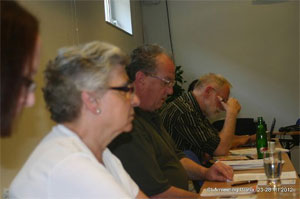 Rumours of the death of the fold are greatly exaggerated. Delegates at the Tenth Carmelite Librarians’ Meeting (Decima Riunione Bibliotecari Carmelitani) know in advance that the information technology revolution has clarified the role of librarians. In particular, it has shown us that books are not the main business of librarians. Our main business is the keeping of memory, the provision of reading, the selection of essential knowledge. By which I mean, reading in whatever form it may be presented, via whatever carrier the words are delivered. The codex, or fold, was not the first mode of transmission left to the care of librarians, and it won’t be the last. Nor do we hear laments from the rooftops for the loss of the fold, even if some of our borrowers ask inappropriate questions about whether librarianship is a thing of the past, now that ‘everything’ is online. Plainly our job is not to waste time explaining away their misconceptions, but to ask what it is they are looking for. Chances are we will have the answer, or know where to find it for them. More than likely the answer will not be online, but in the lines of a folding item in the library. Thus the conference kicks off, delegates ever sensitive to what our users read and how they read.
Rumours of the death of the fold are greatly exaggerated. Delegates at the Tenth Carmelite Librarians’ Meeting (Decima Riunione Bibliotecari Carmelitani) know in advance that the information technology revolution has clarified the role of librarians. In particular, it has shown us that books are not the main business of librarians. Our main business is the keeping of memory, the provision of reading, the selection of essential knowledge. By which I mean, reading in whatever form it may be presented, via whatever carrier the words are delivered. The codex, or fold, was not the first mode of transmission left to the care of librarians, and it won’t be the last. Nor do we hear laments from the rooftops for the loss of the fold, even if some of our borrowers ask inappropriate questions about whether librarianship is a thing of the past, now that ‘everything’ is online. Plainly our job is not to waste time explaining away their misconceptions, but to ask what it is they are looking for. Chances are we will have the answer, or know where to find it for them. More than likely the answer will not be online, but in the lines of a folding item in the library. Thus the conference kicks off, delegates ever sensitive to what our users read and how they read.
As the distance increases between writer and reader, reliant on robots as intermediaries, it is unsurprising that words have become text – undifferentiated and perpetual text. Streaming of information creates an illusion that one set of words is of equal value with any other set of words, just as the stupendous availability of music online has created the illusion that all music is simply downloadable product, without distinction, notated wallpaper. The word ‘robot’ is a Czech contribution to English vocabulary. In his science fiction play of 1920, Karel Capek introduces to the stage robots, who are mass-produced out of organic matter in a factory. These are artificial humans who can do all the work for humans, which is helpful, until some of them turn hostile and end up destroying the world, leading to the extinction of all humans. Not helpful, and not very bright. ‘Robot’ has a fraught history in English usage, as a robot can be a creative and practical extension of human utility, but also an unmanageable and dangerous threat to human potential. It can be a good servant, but a bad master. When it comes to reading, this paradox can have consequences. How much text can we take from the robots until it is all too much? The robots keep on keeping on. While the robots keep on sending text in unmanageable quantities daily, how do we, the fragile humans with our soft retinas, decide what is readable, and not? For every librarian replaced by a robot, there is one less conversation about knowledge that could make a difference to our future.
After Capek wrote his robot play he recognised that it was a re-telling, probably unconsciously, of a Jewish legend closely associated with the city of Prague: the legend of the golem. This Hebrew word occurs once in the Bible, at Psalm 139, 16. John Wyclif in English makes golem “unperfect thing”, out of which the King James Bible (1611) says “Thine eyes did see my substance, yet being unperfect; and in thy book all my members were written.” It seems to be variously translated inanimate matter, amorphous unformed material, unformed substance, or embryo, depending on your translator, but was used previously in the Middle Ages for a human made from the earth. In Jewish mysticism this clay person was brought to life by the insertion of a slip of paper with one of the mystic names of God, under his tongue, rather as we validate a ticket to go on the metro, or write in a password to go to the next part of a website. As with Capek's robot, the golem would then follow the directions of the one who created him. Related to this new found power over an inhuman human was the fear that the golem might get out control and take things into his own hands, making him a precursor of Frankenstein and other technological inventions that do the opposite of their creator's wishes. As with robots too, the golem in some stories turns on his own creator and kills him, thus exemplifying one of the more unhappy metaphors for human invention. Yehudah Liva ben Betsal'el, Chief Rabbi of Prague in the late 16th century, is the person given highest profile as the creator of the golem, and when I say 'creator' I don't mean literally, because the golem is created out of reading. Reading makes him so. He is a magical creature invented from stories, from a Jewish mystical tradition involving Hebrew Scripture, letters and numbers. That a golem might or might not exist seems to be at the heart of subsequent stories emanating from the Jewish Quarter of Prague. At different times in history there have been serious attempts to identify an actual golem, including unsuccessful inspections of the attic of the Old-New Synagogue in the city, where legend has it that a golem has lived in secret for centuries.
Caech Carmelite Treasures
The Carmelite Czech Delegation welcomed delegates. We were given a potted history of Carmelite presence in Bohemia, which started in 1347, and not by accident at the same time as the founding of Charles University. In the first period there are no surviving books. They were possibly transported to Vienna, all lost. But by chance a liturgical book was discovered more recently, a book containing two late medieval books bound together. The first book is a little less than 100 years older than the second book. The first is a Gradual with Carmelite themes, circa 200 pages. It contains no name of a pope or emperor, but mentions Saint Wenceslas and one Bishop John, so must have been made before or around 1390. The book is so ancient that there is no reference to the Feast of Our Lady of Mount Carmel, a date that later became central to the Carmelites’ year. But Our Lady of the Snows is mentioned, with a special dedication, leading to the conclusion that the book must be Carmelite. (One of the great churches of the city is named for this dedication.) The colophon to the second book is dated 11 April 1473. The book contains a Latin poem about a legend of Mary in which it snows in Rome in August. This legend is related to the formation of Santa Maria Maggiore, the basilica church in Rome dedicated to the Blessed Virgin Mary. These books had been used by Benedictines for their Christmas Vigil. It was only through reading an article in a journal that the attention of local Carmelites was drawn to this bound set, and thus a link with their more remote past. Today the historic volume is held in the National Museum at the top of Wenceslas Square. Such stories remind us that generations of readers gave their complete attention to the ultimate meaning of the words of worship, only very secondarily to such niceties as provenance or date. The words themselves, properly used, their meanings repeated and learned, make redundant the demands of time and place. In hearing about the two books in one, I could not help seeing it as a descriptive metaphor of Bohemia itself, in which different periods of history, at odds with one another, are squashed together unceremoniously. The physical layout of the city, seriously attractive as it is, is also a record of historical periods pressed against one another. It is left to the visitor to differentiate one thing from another, one period from the next, as for the locals this has already been absorbed, the continuities registered.
Discovering Prague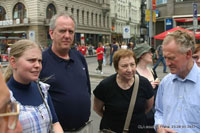 Going out into the city, there are various ways of finding your bearings. You can download the Prague App, which gives a full guide to the city simply by hitting your hand screen. A couple of delegates took this option. ‘Top 10 Prague’ (D&K Eyewitness Travel, 2011, c2003) is big on main features, contains lift-out maps, and has a droll commentary (“… architecturally it embraces every epoch from Romanesque to the Brutalist style of the Katva department store.”). This full colour Baedeker has clearly not been updated however, as the Globe Internet Café (“An expatriate institution”) I found closed, empty and covered in graffiti, due to the onset of wifi. Indeed, at airports, hotels, and every other tourist locale, it is now assumed that the traveller has her own laptop and can just plug in. I could find only one internet café in all of Prague, down a side street, rate of one crown per minute. Or, if you are a Melburnian for whom sitting for hours on trams is a form of spiritual sustenance, then the way to discover Prague is to buy a 110 crown all-day ticket and let the next tram take you where it will. Prague is blessed with one of the best tram (Habsburgs) and metro (Soviets) systems in the world. Furthermore, English readers are privileged everywhere they travel, as most public signs are in Czech and English.
Going out into the city, there are various ways of finding your bearings. You can download the Prague App, which gives a full guide to the city simply by hitting your hand screen. A couple of delegates took this option. ‘Top 10 Prague’ (D&K Eyewitness Travel, 2011, c2003) is big on main features, contains lift-out maps, and has a droll commentary (“… architecturally it embraces every epoch from Romanesque to the Brutalist style of the Katva department store.”). This full colour Baedeker has clearly not been updated however, as the Globe Internet Café (“An expatriate institution”) I found closed, empty and covered in graffiti, due to the onset of wifi. Indeed, at airports, hotels, and every other tourist locale, it is now assumed that the traveller has her own laptop and can just plug in. I could find only one internet café in all of Prague, down a side street, rate of one crown per minute. Or, if you are a Melburnian for whom sitting for hours on trams is a form of spiritual sustenance, then the way to discover Prague is to buy a 110 crown all-day ticket and let the next tram take you where it will. Prague is blessed with one of the best tram (Habsburgs) and metro (Soviets) systems in the world. Furthermore, English readers are privileged everywhere they travel, as most public signs are in Czech and English.
European Reformations
The privilege of reading is an originating cause of the European Reformations, the Czech version of which defined national character. What is the Christian religion? The foundation words of the Gospel? The practices that arose out of those Gospels? In every generation we observe the pull between the knowledge setting of society and how Gospel is used to interact and interpret that setting. The Catholic priest Jan Hus knew his Wyclif. Wyclif translated Scripture into the native tongue and believed that the uneducated could understand the words just as well as the educated, the laity as well as the clergy. His sermons were direct expositions of Scripture itself, something not common from pulpits at the time. Scripture may be, indeed must be read in the vernacular, where it is available to all. Hus was not some local Prague troublemaker, he was the Chancellor of the University, and the challenge he gave to the established order in Bohemia was to have vast repercussions across Europe, one hundred years before Martin Luther. He preached in Czech, inspiring both aristocracy and the common people. How do we read Scripture? And who has control of the interpretation? Hus placed Scripture as superior to church authority, indeed as the only authority, making himself predictably enough unpopular with church authority.
The abiding influence of Jan Hus on Czech identity is evident in many subtle ways in Prague. Their way of noticing the opposite position and veering towards it, is one basic example. When Hus was betrayed and killed at the Council of Constance (1414-1418), his martyrdom forced the latent divisions within Bohemian society. War followed and, eventually, the assertion of Habsburg authority over the country. When the Catholic Reformation reasserted the power of Rome (and Vienna), one way was to build vast and impressive buildings. The term re-Catholicisation is used in their history books for the process. This mission strategy by architecture resulted in two of the most impressive building complexes in Prague, the Loreto and the Clementinum, the latter an educational institution built by the Society of Jesus upon a Dominican foundation. It shouldn't be a surprise to learn that the indefatigable Peter Canisius SJ was responsible for the construction: is there anywhere in the world he didn't go? Today the Clementinum is not run by the Jesuits, but houses the National Library. It holds the national treasure, an 11-th century illuminated Gospel Book called the Codex Vyssegradensis, which records the foundation of the kingdom of Bohemia as well as containing the earliest known representation of the Tree of Jesse. As though to keep things in balance though, the library also contains original documents signed by Jan Hus, the surviving library of astronomer and alchemist Tycho Brahe, and a superb collection of Mozartiana. A deal was announced last year with Google Books for two hundred thousand Czech books in the Clementinum to be digitised for common use, nearly all imprints between the 16th and 18th centuries.
In ‘The Secret Miracle’, a short story by the blind librarian Jorge Luis Borges, the main character, a playwright named Jaromir Hladik, has a dream about the Clementinum where the librarians look for God in the books of the library. Borges wrote this story during the Second World War, when Prague was occupied by the Nazis. Hladík, who is living there during the occupation, is arrested and charged with being Jewish as well as opposing the Anschluss. He is sentenced to die by firing squad. He goes through raw terror at the prospect of death, but then turns to an unfinished play, titled ‘The Enemies’. His previous works he feels to be unsatisfactory and wants to complete this play, the one by which history will judge and vindicate him. With two acts left to write and his death sentence imminent, it seems impossible that he could complete it in time. On the last night before his death, Hladík prays to God, requesting that he be granted one year in which to finish the play. That night, he dreams of going to the Clementinum, where one of the books contains God within a single letter on one of the pages, which the cranky old librarian has been unable to find despite looking for most of his life. (Interestingly, in Borgesian terms, he complains of almost going blind looking for this letter.) God is in one of the letters of one of the pages of one of the four hundred thousand books of the Clementinum. Someone returns an atlas to the library; by chance Hladik touches a letter on a map of India and hears a voice that says to him, "The time for your labour has been granted". The next day at the appointed time, two soldiers come and Hladík is taken outside and lined up before the firing squad. The sergeant calls out the order to fire. Time stops. The entire world becomes motionless, including Hladík himself, standing in place before the firing squad. However, although he is completely paralysed, he remains conscious. After a time, he understands: God has granted him the time he requested. For him, a year of subjective time will pass between the sergeant's order and the soldiers firing their rifles, though no one else will realize that anything unusual has happened - hence, the secret miracle of the story's title. Working from memory, Hladík mentally writes, expands and edits his play, shaping every detail and nuance to his satisfaction. Finally, after a year of labour, he completes it; only a single epithet is left to be written, which he chooses, and time begins again and the volley from the soldiers' rifles kills him.
How to preserve the past
It was not possible for anyone to look for this letter during the week of the Meeting as the Clementinum was closed for repairs. Alchemy and numerology had to wait; the delegates had to look elsewhere. Meanwhile our conference enjoyed raising the perplexities of reading and storage. We heard about the ageing of print. The text on photocopies using outdated chemical methods is literally disappearing before our eyes. Yet the instant solution of digitising these rare copies is itself risky if, as we are being warned, the CD or the file itself could become redundant or inaccessible as one technology supersedes another. What will last and what will not? Built-in obsolescence is nothing new and can make new into nothing. We hear about reprint books where the old lettering blurs on the flat page, rendering words illegible. We can see the letters perfectly in the incunabula, but the 21-st century reprint turns them into swatted flies. Print-on-demand, an astonishing publishing explosion directly caused by the digital revolution, is a mixed blessing. A scanner that misinterprets accents produces a book that is a schemozzle of indistinguishable signifiers and signifieds. This must be particularly problematic with Czech, a language bristling with acutes, haceks, and dipthongy things. O, one utters, for the ancient text in all its papery glory! Spinoffs of this sort glut the market, ghosts of the originals, and not least on Amazon.
The keyboard itself has entered a whole new era, now that computers can only be spoken to by keying and mousing. There are times when we speak our mind to the computer, but that’s another matter, and only a matter of time. The qwerty has become the subject of international dispute, where nerds with time on their hands may write petitions for a better way of arranging the letters. These arguments do not have much leverage while qwerty is an historical and international reality as fixed as diplomacy. Having said that, Czech keyboards are fun for the novice, as their range of diacritics requires extra keys and registers. (The Arabic keyboards at Dubai Airport had more graphemes than there are stars in the sky above.) This led to a comedy of errors when I needed to send emails, as my passwords included figures that are located in unorthodox Czech parts of the console.Frustration gave way to relief as it was explained how the settings can be changed from Czech to English via a feature on the toolbar. The keyboard has become our means of touring the internet, our readiest way of finding what we wish to read next, our search guide for reading the newspapers, but it is fallible and prone to error.
Everyday the newspapers are full of all the most awful news about what humans can do. Even though we tell ourselves we will stop reading the newspaper, enough is enough, still we go back and read more of this awfulness. We seem to have a compulsion to go back for more, taking it all in with private relish and reacting in the same old appalled way. These thoughts were given, but much more succinctly and in perfect German, by Franz Kafka in his diaries. (One of the most famous entries is for 2 August 1914: “Germany has declared war on Russia. Went swimming in the afternoon.”) I relate Kafka’s thoughts from memory as I do not have the Diaries in front of me. Newspapers. Does anyone still cut columns from them to paste into scrapbooks? Does anyone cut and paste from online newspapers and store them in their cloud? And if so, do they go back and read them later?
Franz Kafka was a writer I discovered when I was at secondary school. His effect was direct and subversive. Perhaps his best known story today is ‘Metamorphosis’, about a young man who wakes up one morning to find he has turned into a cockroach. An insect at least, but always cockroach in my mind. Even today, after living with this story half a lifetime, there is still something utterly shocking about it that defies easy explanation. He wrote ‘The Trial’, a novel about a man who is arrested for a crime that he doesn’t know about, but by the end has come to believe he is guilty of committing. And then there is ‘The Castle’, another story about sinister and inexplicable bureaucracy that controls people’s lives. All of these stories express the state of existence in late imperial Prague, most evidently ‘The Castle’ because the inner city is overseen, from almost any river vista, by the immense hilltop edifice known as Hradcany Castle. Kafka was a novelist deeply aware of the multiple demands for attention on the modern educated reader, hence his agony about why he wastes so much time reading newspapers. He knew that there was no point writing a novel unless it was going to have an immediate and lasting impact on the reader. “A book must be the axe for the frozen sea within us,” was not said by someone intending to produce a nice read, or who saw reading as simply a way to pass the time. Any book written by Kafka had to be powerfully memorable. It had to change your life. It is this high personal expectation that is behind Kafka’s directive to destroy all of his manuscripts at his death. Fortunately his literary executor defied the author’s wishes, which is why visitors to Prague today can seek out the city’s Kafkaesque aspects, whether obvious or not.
Strahov Monastery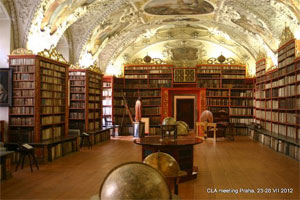
One morning our Carmelite guide distributed the tram tickets for our trip through town, across the Vltava and up Hradcany to the Strahov Monastery. This is one of the great historic landmarks, founded around 1140 and the scene of the fortunes of Prague itself: false starts, constructions, additions, fire, plunder, rejection, reclamation, repairs, triumphs, disasters, quiet, noise, looting, closure, destruction, decoration, re-opening, almost everything but defenestration. Holy people do not throw people out of windows. Ushered through large portals and long corridors we arrived at an unassuming door that led us into one of those library rooms we only dream about. Heavy floorboards led the eye inward toward the invisible point of perspective. Sunlight glowed across shelves matched strictly to the height of the books, surely nothing after 1900. Above us swirled one of those Baroque stucco ceilings that seem to have been modelled on whipped vanilla icecream. Frescoes circled above us as well, each one containing a scene with a scriptural passage that links knowledge with Wisdom. Above the door was painted the well-known saying: Initium sapientiae timor Domini (Psalm 110). This is the Theological Hall, completed in 1679. We put our shod feet into big felt slippers in order to slide across the boards without making a dint. It was difficult to restrain the temptation to pull large folios from the shelves, to read their title pages, to check out the inscriptions, to gaze inside some of these rare imprints, to listen to long ago theologians forwarding a premise. Not only is the readerly impulse as natural as breathing to a librarian, so is the interest in finding out how the books are arranged, how did they bind that multi-volume Augustine, and what is the truly rarest, by which we don’t mean the oldest, of all the books. (Google Image ‘Strahov Monastery’ if you are wondering what I am talking about.) So many rarities, so little time.
The monastery is Premonstratensian and even though the library rooms themselves are post-medieval it is unavoidable in such a setting not to think of the different kinds of reading practised by those Benedictine men throughout the Middle Ages. The existence of the book as a practical means of individual memory evolves in that period. Single manuscripts of theology were circulated to houses, where they would be read aloud (lectio) and in silence (meditatio) until the readers had memorised the contents. Public and private reading were organised for optimum remembrance. The ideas promoted in such works then became the personal knowledge of each reader, their added collective possession. The teachings became their teachings, though dispute was inevitable where newfangled notions were introduced. When it came to worship this was all the more important. It becomes self-evident that a single illuminated missal, or other liturgical or scriptural work, would be treated with the utmost care and reverence by individuals for whom this was the only copy in their house and maybe the only copy they would use in a lifetime. The words were their way into wisdom, so methods of reading, whether voiced or studied in silent retreat, were vital to existence. We can see, in such a world, why the coming of the printing press had such a rapid effect on their way of life, and also on their actual ways of thinking, trained as they had been for generations in reading solitary texts, solitarily together.
One of the most exquisite practical objects in the Theological Hall at Strahov is a rotating desk. Called a compilation wheel, it has ledges taking three or four books each, fitted into a circular hold that can be turned by a handle. The ledges keep to the horizontal by gravity, the engine having about six or eight of these ledges, so that a reader or translator can have as many as a dozen or more books open at once at a glance. This 17th century marvel provides ideal service for intertextual research, with no fussy delimiting of screens, tiresome online searches for forgotten quotes, or piles of sources to trip over. It is an object lesson in the needs of the Renaissance and Enlightenment reader, who worked with many texts at once and would work for the first time with many of them open, pages turned at a moment’s notice. With the tip of a hand a small library of books was available to read, all in real time.
Another exquisite object is in the adjoining Philosophical Hall of Strahov Library. It was all explained to us in impeccable Czech by the librarian, then through our charming translator into English. A tall free-standing cabinet bookcase is situated along one side of the room. It was the gift of the Austrian Princess and second wife of Napoleon Bonaparte, Marie Louise. In the autumn of 1812 she sent books to Strahov, a Viennese set of porcelain, and a four-volume catalogue listing the printed works in the first Louvre museum. This set was a piece of high culture propaganda, a political stunt masterminded by the French Emperor himself. However, when the exclusive publication was completed, he had the whole print run destroyed, after it was explained that it listed a large number of works that had been looted from other countries during his campaigns, most especially Italy. The Bonapartes’ propaganda coup turned into what nowadays is laughingly called a public relations disaster. Even as the donation was being received Napoleon was engaged in his ill-conceived Russian invasion, thus in a very short time leaving Prague with one of the handful of first edition Louvre catalogues still in existence. It is safely locked behind the cabinet glass, a curiosity kept from the cataclysm, like so many curiosities in this place. The reader can only wonder at libraries lost and found as she studies these grandiose records of unbridled ambition.
Information and Propaganda
A developed reading habit will begin to distinguish between information and propaganda, between the presentation of the words and their maker’s intentions. We were reminded of this truth after leaving Strahov Monastery and arriving down the street at the Archbishop’s Palace, directly adjacent to Hradcany Castle. The plan was to say Mass in the chapel of the Palace, but first our Carmelite guide, the erudite Father Gorazd Cetkovsky, told us a story at the castle gate about Josef Beran, Archbishop of Prague from 1946 until his death in 1969. In 1948 the archbishop declared in a sermon that the Catholic news in Czechoslovakia was not official but was being controlled by the Communists. At the time church services were being interrupted by hecklers and at this service the Reds derided Beran, whistled and yelled loudly. In a detail already suggestive of legend, Fr Gorazd said that the children in the church ran crying to the altar, which one took to mean a place of security for the children. Consequently the archbishop was put under house arrest by the State, leaving one to ask: what are we reading? What reading is official? What official publications are in fact not official? What do the officials want us to know? When living in a police state, either pre-1945 Nazi Prague or post-1948 Soviet Prague, how much is being made public? What is being repressed? Especially when the organization is the church, which philosophically disagrees with the State but publicly maintains an appearance of cool agreement with or tolerance of the State, simply in order to survive? Beran was separated from his people and his diocese for twenty years. Ordinations were conducted secretly, sometimes in the small chapel that we were about to worship in. Unable to minister properly to the congregations and their clergy, Beran lived a life of suffering and prayer. When Rome advised that it wished to make him a cardinal, the Communist authorities told Beran that if he went to Rome he was not to come back. After painful deliberation he left Prague, attending the last session of the Vatican Council, and dying in Rome. It was therefore with a sober sense of history and religious commitment that we filed through the large rooms of the Archbishop’s Palace and into the ornate Baroque chapel, aware that for all its beauty this was a place of prolonged imprisonment, suffering, and dedicated service.
Unexpected Support
An unexpected course of behaviour is recounted in an essay by the novelist Milan Kundera. Himself an atheist, Kundera started supporting the Christians through this period, and even started going to Mass, when he saw them being bullied publicly and privately by the Communists. We may call his reactions honourable; they were also very Czech. Czechs are conscious of their religious inheritance, even when they disagree with the religion, and see any outside imposition of injustice as unacceptable. Obviously Kundera’s reactions have a political motivation as well, but he was defending the freedom and right of religion. To judge by his essays, Milan Kundera’s central belief is in literature, and in particular the centrality of the novel as the locus of changing human consciousness. In this respect he is not very distant from Franz Kafka. Anyone who believes that the novel says it all, or says it best, will have an enormous faith in readers. He must also of necessity have faith in the reader to get it right. Kundera represents the Western Humanist tradition that says a creative fiction has its own internal life and references that can only be fully appreciated inside the reading life of that fiction. It is therefore easy to understand why Kundera disapproved of the film of his novel ‘The Unbearable Lightness of Being’, set in the period of the Prague Spring in the late 1960s. In the Czech edition of the book, Kundera remarked that the movie had very little to do with the spirit either of the novel or the characters in it. As a result of this experience, he continued, he was no longer allowing any adaptations of his works. Such a standoff plays right into the purpose of one of the most common conversation openers in society today: was the film as good as the book? Or, would you read the book after seeing the film? Et cetera. We have become so used to book and film being interchangeable units, as though one were the same as the other, that we have lost sight of the quite complex differences that exist between the visual and the print media. Kundera will be saying in words a hundred things that a film can only hint at, or cannot communicate at all. How can it? Likewise, in a few frames we can see graphic reconstructions of the events of August 1968 in Prague that Kundera must either stretch to make credible or assume the reader knows about beforehand. The novel has philosophical and literary connections from page to page that a filmmaker may only be able to transmit by a choice of poses, sets of shades, or symphonic hints. While Kundera may be right to give up on the idea that a film can ever say what he says, the belief that a film could do that anyway is in itself a mistake. Without being a snob about it, Milan Kundera’s decision seems to be based on the belief that the reader will only really be able to understand him by reading his words. The relationship between writer and reader is fixed on the page; everything else, films included, is commentary after the fact.
Meditation, prayer and new technology
The library conference continues behind closed doors in the nearby inner suburb of Karlin. A session on the new gadgets prompts repeated imaginary questions about the future. If tablets and smartphones become our first mode of reading, is there something we are also losing in that exchange? When a handheld device contains all of our reading for the next month, are we even thinking of visiting a library? Will the touchscreen really replace flimsy old breezy old paperbacks? Will there come a day when everything can be found in an ebook? Or are we creating a world divided into ebook available versus ebook unavailable? Can we concentrate for as long at a screen as we can at a paper page? Is medieval meditatio, the practice of reading at depth in silence, better done on some new untested microchip mechanism? Or is the uncomplicated simplicity of the written or printed sheet of paper, by definition, more conducive to meditatio? The same questions can even be framed for lectio. If online periodicals become so expensive that no one can afford them, will there be a publishing revolution that drives new available knowledge out online, for free? Is much of the internet little more than journalism? How much of it will be read in five years? Even more worryingly for those who believe in knowledge, how much of it will not be available in five years? And where does that leave the author trying to connect with her reader? How can we prove whether that knowledge there yesterday is still there, or not? Is there a librarian keeping tabs on the holdings of the world wide web? Is anyone cataloguing all of this stuff? If our private reading and writing habits can be monitored online, then may we not want to go private and stay offline? Are there secret police out there who can read our emails and blogs without our knowledge? Call me paranoid, but isn’t that an actual possibility? Even more worrying for writers than their work being read by people they don’t know is the idea that their writing is not being read and may even have disappeared offline, never to be seen again. What then? Start a new chapter? What exactly is being read in this world of saturation images? Are we even reading in the same way we did ten years ago? What is the internet doing to our brains? What’s it doing to our eyes? What’s it doing to our reading? Are we addicted to information but forgetting about communication? Is copying from multiple sources off the internet poetic license or creative plagiarism? If I admitted that my retelling of ‘The Secret Miracle’ by Borges drew from various unnamed sources online and off, does that make my version an unoriginal copy or a highly original mashup? These and other cheery questions keep the mind ticking over until the next coffee break.
Prague Reading
The people of Prague read books on the park benches of the river islands. Mid-morning coffee drinkers return to their history book near the Franciscan Gardens. Caricaturists, selling their charcoal sketches on the Charles Bridge, read cartoon books while waiting for the next portrait to walk by. On the red trams, old men read the tiny Czech print in immaculately bound books. Locals sit with pilseners at open-air restaurants, reading the latest trade paperbacks. Tourists stand in the glare of the square to read where they want to stare next. The process of close reading goes on, checking where they were last, what language on the present page links intimately to language elsewhere in the text, links that only the mind can make that is paying attention. The mind lives with the author's created world of words. Remembrance is not just in the printed book but relies on the remembrances in the reader's mind. Author and reader renew acquaintances, the better to achieve some stage of advanced agreement, some place of shared recognition. The people of Prague stay at their art nouveau upstairs windows, entering a book they haven't entered for twenty years. In the bookshops filled to the ceilings over two floors with books only in Czech, buyers while the time with new titles, getting the angle of blurbs, tracing the pattern in a table of contents, gauging price against contents. There seem to be not many ipads and it’s the tourists with the smartphones. The soft slow turning of the page is the quietest sound along the sides of the Vltava. There are amazing, gold-tinted towers, weeds mandatory in footpaths and along sides of even large stately buildings, its seems, and the climate is balmy before a summer shower. The vast Vltava moves at steady pace and breezes down the barriers with ducks bobbing, as another page is turned.
Coming home
Access to in-flight screens involves touching one of three choices on the homepage: I, C, or E. Information, Communication, or Entertainment. A great pity there is no K for Knowledge, L for Learning, or best of all, R for Revelation. That would be a screen to die for, maybe. Information is little different to Communication on this screen, readymade facts that serve the traveller's need for quick answers. We hardly call this reading in the real sense of meditatio or lectio. That everything else is Entertainment speaks for our age, where no differentiation is made in consumer culture between works of depth and works of inane skimming. While we can be thankful for small mercies - some of the films are good and the music excellent - the image-heavy choices on the touchscreen bespeak a view of the audience that is tellingly non-readerly. It reminds me how much reading is an active process, not a passive one. Perhaps the airlines still have to catch up with words. It is therefore with some relief that I switch off the screen and pluck out the trusty in-flight magazine from the rack. There is, furthermore, a lead article on the changing habits of reading. The plane hurtles elegantly over Baghdad in the vague direction of Australia. I have a scribbled conference pad full of jobs for home, all of them to do with reading: emails to colleagues about indexing of journals, an article to scan about 19th-century Carmelites, follow-up on documents to write on librarianship, other emails to send to overseas libraries offering donations of out-of-print books using cheap freight, lists of authors whose titles must be ordered, lists of unheard of titles that I must read myself, follow-up emails to colleagues post-Prague. But amidst the fiesta of news in the in-flight magazine, I have to sort out in my mind the meaning of an article on open innovation, Web 3.0 social financing, and crowdsourcing, deciding on the basis of words received whether or not this is something to act on in the next six months: “The platforms mentioned above only begin to scratch the surface of distributed knowledge: its potential forms and applications are near boundless. While there’s ample room in the world for individual innovators and geniuses, this generation’s most elucidatory source of knowledge will likely be the collective mind.” (‘The magical power of crowds’, by Eric M. Blattberg, in ‘Open Skies’ magazine, Emirates Airlines, July 2012, p. 92)














